Pictures From the Chesapeake Shipbuilding Yard

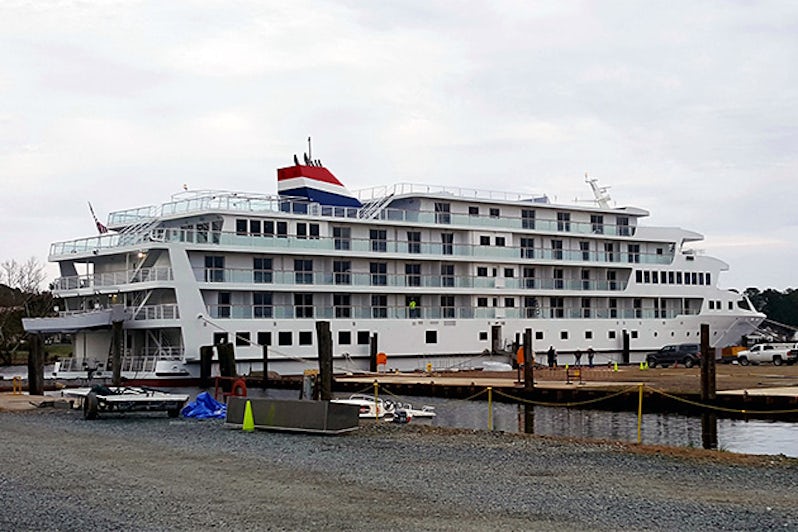
The Chesapeake Shipbuilding yard -- located on Maryland's eastern shore, in the town of Salisbury -- is a rarity in the maritime business: It's owned and operated by the same entity that owns an American cruise line. American Cruise Lines, to be exact.
Although it also builds commercial vessels, the shipyard is being kept busy with American Cruise Line ships. The coastal cruiser American Constellation launches in May 2017; during our trip, the ship was receiving a few last-minute touch-ups. Following on its heels is sister ship American Constitution, debuting in spring 2018. The yard was also prepping to lay keel for "Hull 130," the first modern riverboat in a series of five that the company is planning for American rivers.
Click through the photos to take a tour of Chesapeake Shipbuilding and learn more about the cruise ships being built there.

Charles A. Robertson stands in front of American Constellation, a few days before the vessel heads down the Wicomico River, to Maryland's Eastern Shore for sea trials. The owner and founder of Chesapeake Shipbuilding, Robertson also oversees American Cruise Lines and Pearl Seas Cruises. A New England native, Robertson began working in shipyards at age 14. He launched Chesapeake Shipbuilding in 1975; it's been at its current location in Salisbury, Maryland, since 1980.
Robertson himself will take the boat out during sea trials; he sails all the new vessels and often is the captain during inaugurals. "Some passengers have come to expect it," he said.
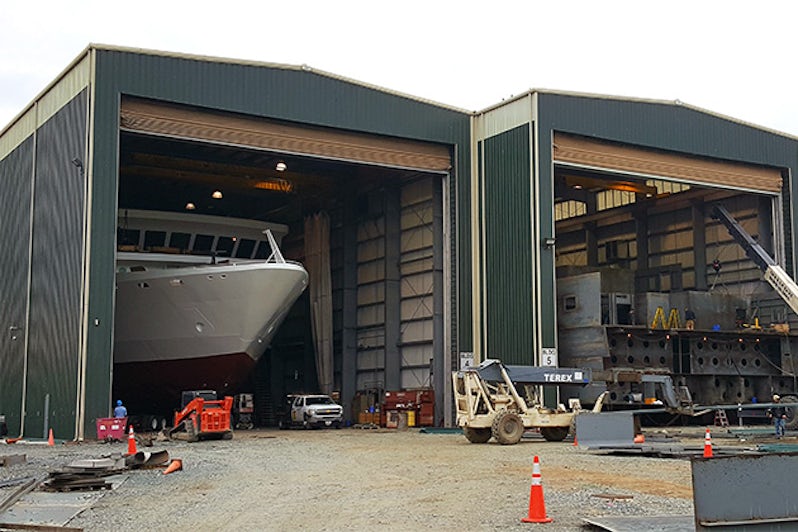
At Chesapeake Shipbuilding, the bulk of the work is done in large hull fabrication buildings. The bow and the stern are created simultaneously, and then attached outside before moving to an outfitting basin. As soon as one ship's pieces move out of the buildings, the keel is laid for the next one.
In the building, work is well underway on American Constitution; the ship is five months ahead of schedule, Robertson said. Owning a shipyard for any cruise line is a major advantage; if you control all aspects of production, it's likelier that your vessel will come out exactly when -- and how -- you want it.
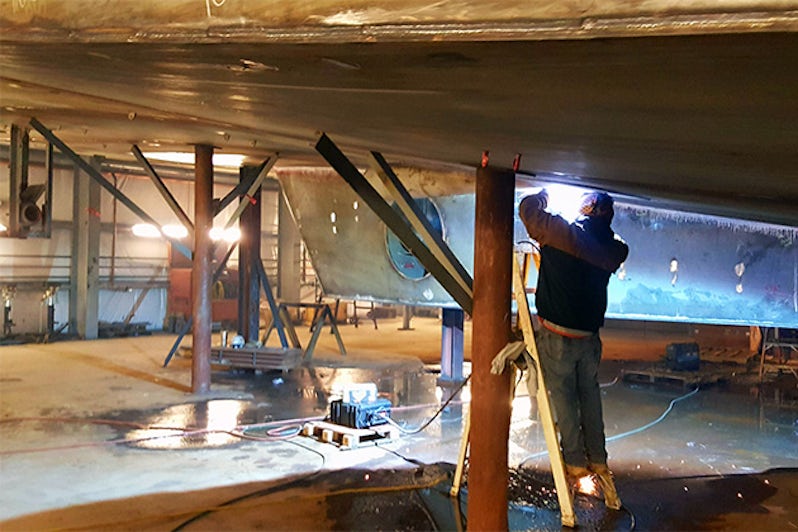
Vessels that sail solely in American waters are subject to a law known as the Jones Act. It protects American maritime workers by requiring that the lines build their ships in American shipyards, using American labor and materials. It also requires the finished product to be staffed with American workers.
Chesapeake Shipbuilding is a major employer in Salisbury, with 175 workers and 50 to 75 subcontractors, including highly skilled electricians, welders, carpenters, plumbers, engineers and naval architects. All receive benefits, vacation and "a lot of overtime"; Robertson prefers to hire people who haven't worked in other shipyards, so the company can train them. Once onboard, workers often spend their career at the yard; Chesapeake Shipbuilding boasts three families where the father, son and grandson are employees, he added.
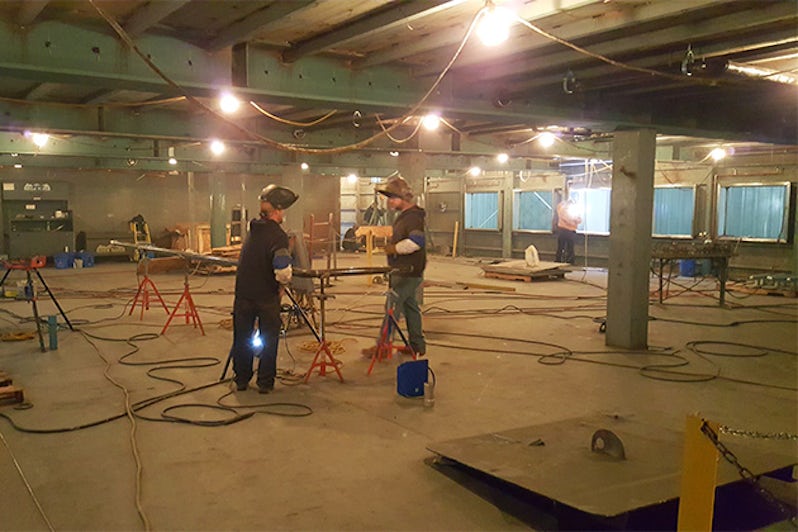
It takes a lot of imagination to see a cruise ship dining room in a construction site. These days, though, it's much easier for workers: much of the steel arrives at the shipyard with outlines already marked by computers (which follow the original designs established by the engineers and architects).
What does that mean to a visitor? When you walk around American Constitution's unfinished interior, you can look down and see the outlines of where walls, doors and bathrooms will be built. It's really an onsite blueprint -- and all workers have to do is work within the lines. Passengers never see these efficiencies, of course, but it does answer questions they may have on why ships can be completed so quickly.
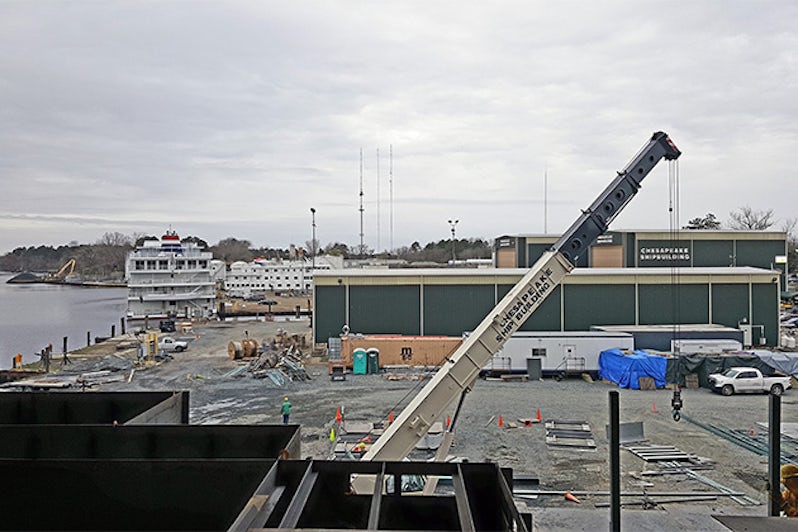
From the stern of American Constitution, you can survey the breadth of the shipyard. The completed ship on the left in the outfitting berth is American Constellation. The ship in the middle of the frame is American Glory, which was retired from the fleet in 2016.
The shipyard is open to scheduled visitors; Robertson said that many passengers, both past and present, tour during the year. "People have driven from Nebraska, just to see the shipyard." Passengers also consider Robertson a friend; "I get hundreds of Christmas cards a year."
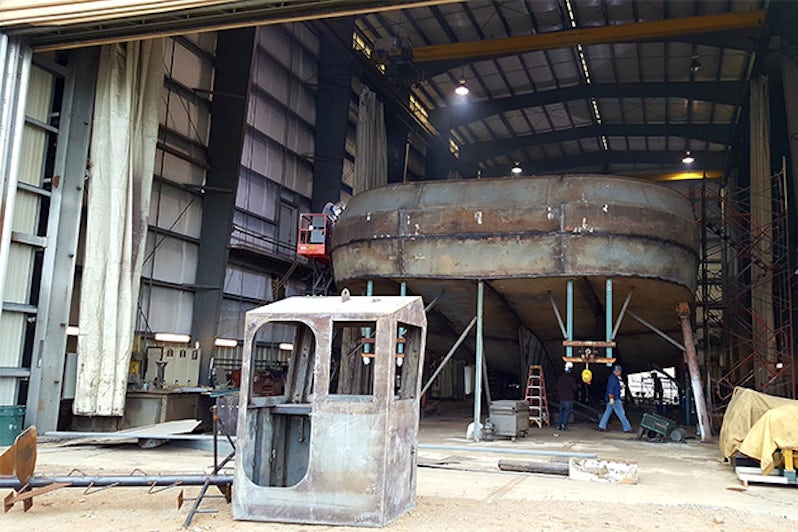
Chesapeake Shipbuilding doesn't only make cruise ships. The company also builds commercial vessels and has an ongoing contract with Vane Brothers for oceangoing tugboats. Seven of the Vane tugboats in New York City were constructed at Chesapeake, Robertson said; others work in Savannah and Philadelphia.
Employees at the shipyard work on all projects as they come up, Robertson said. No one is assigned specifically to cruise ships or commercial vessels. Before a major ship launches, the company has its employees come out to the yard with their families so they can show off their work, Robertson said.

In the outfitting berth, American Constellation is almost ready to go. All that needs to be done is some interior paint and furnishings. After several inaugural sailings on Chesapeake Bay, leaving from Baltimore, the 163-passenger ship will reposition to Boston, where it will sail the cruise line's new Grand New England tour in summer 2017.
After that, the ship will head to the Hudson River for fall foliage tours. It will spend the winter based in the south, sailing cruises between Charleston and Jacksonville, Florida. In April 2018, it will reposition to Seattle, where it will sail the San Juan Islands.
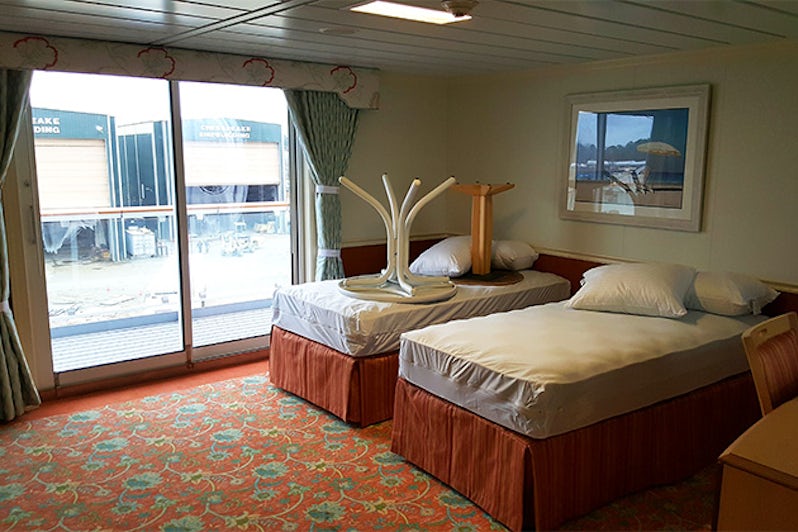
Cabins on American Cruise Line ships are among the largest in small ship cruising. The smallest double, which doesn't have a balcony, is 260 square feet. The balcony cabins, like the one seen here, are 350 square feet and suites go up to 450 square feet.
Robertson said the cabin size resonates with his passengers, who are in the older demographic (mostly 70s and 60s). "They don't want to go on a larger ship," he said. "They want the big stateroom. They want the veranda. They want room service." Customer surveys drive the line -- and changes are made based on feedback, Robertson said.
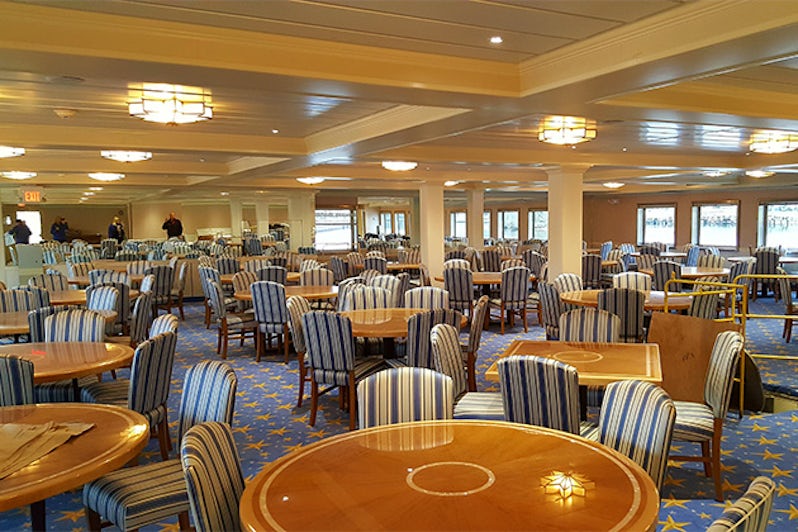
The main dining room for American Constitution shows some of the passenger feedback in action. The ship has more four-tops than others in the fleet; Robertson said that the younger the passengers are, the more they'd rather eat in a smaller group than a large table.
The line is also tinkering with what has been a signature: planning lunch and dinner selections ahead of the time, at breakfast. The practice started because the line wanted to reduce food waste, but Robertson said some passengers would rather order off the menu at that mealtime. The line is experimenting with both ways to see what makes sense.
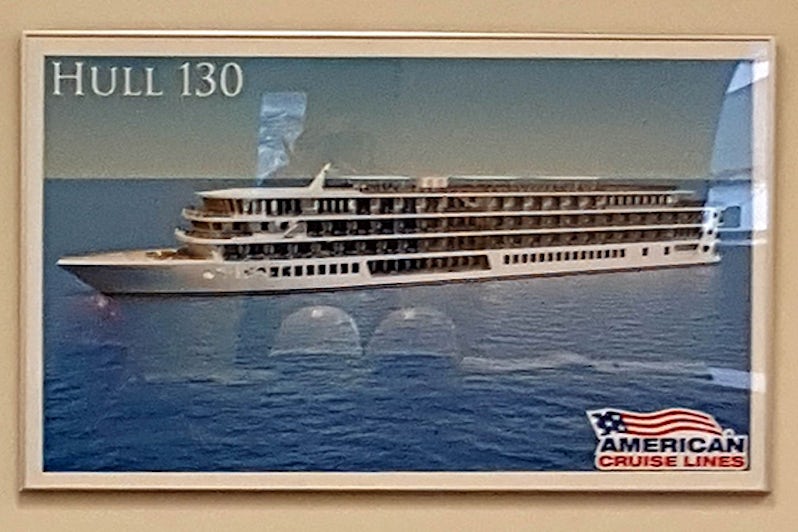
Hull 130 is the current name for the line's first modern riverboat. Up to this point, American Cruise Lines has built replica paddlewheels for the Mississippi, Snake and Columbia rivers. But Robertson says his passengers have seen more modern riverboats in Europe -- and that they are looking for a sleek look here in the States.
Hull 130 and its four siblings to come will be much wider than European riverboats; so much so, Robertson won't give exact specs so he doesn't tip off any competition. That will allow American Cruise Lines to offer bigger cabins that what's currently on the rivers; the locks and bridges that restrict the height and width of European riverboats don't apply in the U.S.
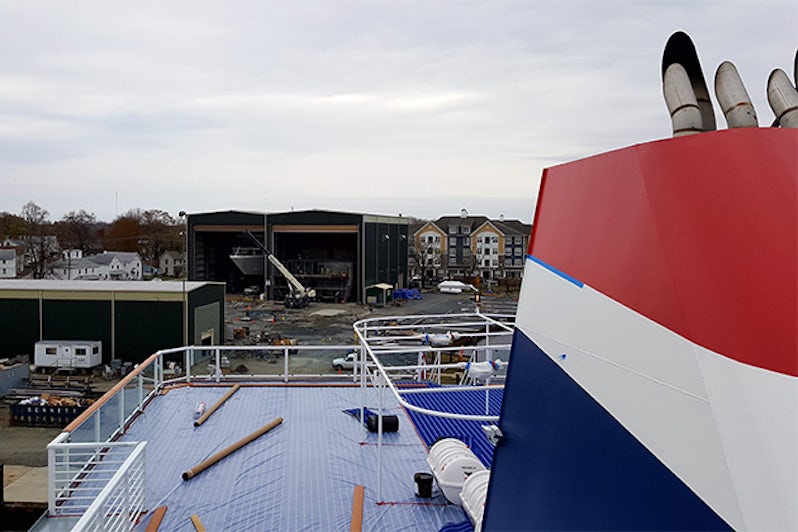
So with all the different projects ongoing at Chesapeake Shipbuilding, what's Robertson's favorite? He seemed amused at the question. "The last one we built," he said.
What he does stress is that cruise ships being built today are light years ahead of their predecessors -- not just in what passengers see, but in the technological advances and safety features such as fire suppression. Expect more work through robotics in Chesapeake Shipbuilding's future -- and a continuing line of more ships, Robertson said. "We do it differently than anyone else," he said.